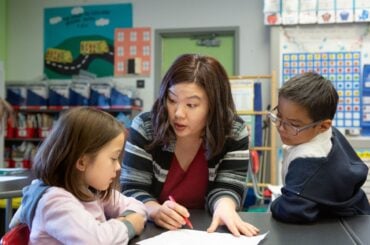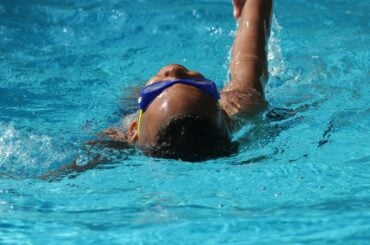If you’re considering sending your kids back to in-person school this year—or if you simply don’t have any other options—you probably have plenty of questions and concerns about the health and safety measures your school is taking, and how they’ll affect your family. There are a lot of unknowns as we go into this school year, but have you considered what you can do to prepare your child better for what’s to come?
In a recent Facebook Live Q&A, ParentsTogether discussed school safety with two New York City emergency physicians, Dara Kass, M.D., and Arabia Mollette, M.D. Both experts emphasized that one of the most important things parents can do is to talk to children about the reality of this school year.
Children need to be ready for the fact that this school year will be a lot different from what they’ve gotten used to in the past. “When you get to school this year, if you open in a hybrid model, you will find arrows on the floor,” Dr. Kass says. “You will find that children are going to have to walk in a straight line a certain number of feet apart. They’re going to have to wear masks and keep their hands to themselves.” Discuss these examples in as much detail as you can with your kids, and have them practice and role-play at home.
Dr. Kass emphasized that kids need to understand that “the rules are really serious this year.” She said that she’ll make sure her children understand that if they don’t follow protocols, they’ll be putting their teacher and their classmates at risk. “They have to listen, they have to sit at their desks, you can’t just pop out of your seat. A lot of the risk to teachers comes with unexpected movement by children,” she explains. Plus, kids should be aware that the teacher and the entire class may have to stay home and quarantine for two weeks if there is risk of exposure.
As part of back-to-school preparation, “You have to create a culture of mask-wearing with your children,” Dr. Kass urged. Have your child practice wearing a mask at home for the length of the school day to help them get used to it. Make sure they have masks that they like, that are comfortable, and that maybe even coordinate with some of their school outfits.
Dr. Mollette added that making and wearing masks can be a fun, creative project—you could even let your child make a new mask every two weeks to keep them engaged. “We’ve already been through so much in this country with the pandemic and everything else,” Dr. Mollette said. “Why not take the negativity out of it and put a positive spin on it, so that these children can see that, ‘Okay, I have to wear this mask, but this is going to be fun because I can create it—okay, I’m saving someone’s life.’”
Underlying all of these topics is a greater conversation about respect and caring for others. Try to get kids to think about the effects of their actions on not just themselves, but also the family members they come into contact with, each of their teachers, the bus driver, the cafeteria workers, other school staff, their friends’ and classmates’ families, and the wider community. The need for more community-oriented thinking is one thing that Dr. Mollette believes we can all learn from this pandemic.
There is so much that’s out of our control right now, but we can double down on our own family’s role in helping keep our communities as healthy as possible. Watch the full video for more tips and information about staying safe in the 2020 school year.






